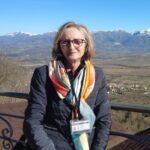Reading time: 9 minutes
The village of Greccio in the central Lazio region is known all over the world for the first living nativity scene created by Saint Francis of Assisi. “And Greccio became a new Bethlehem,” wrote Thomas of Celano two years after the Saint’s death. A road sign before arriving at Piazza Roma, the fulcrum and center of the town, reminds us that Greccio’s twin city has been Bethlehem for more than thirty years now.
And Greccio became a new Bethlehem. Tommaso da Celano
A Glimpse of Greccio’s History
Greccio sits atop a rocky spur at 705 meters above sea level in the middle of the Sabine Mountains, surrounded by centuries-old woods and with plenty of freshwater sources. It is a kaleidoscope of colors during all seasons, and even when winter arrives, among the skeletal trees, there is always holly, juniper, butcher’s broom, viburnum, holm oak, and downy oak with its red leaves waiting for the new gems.
The first historical memory of la Curtis de Greze dates back to 1016 through the Farfense Registry when Rainerio di Zazone and his wife Roccia donated a mill to the Abbey of Farfa, which already had claims in the area.
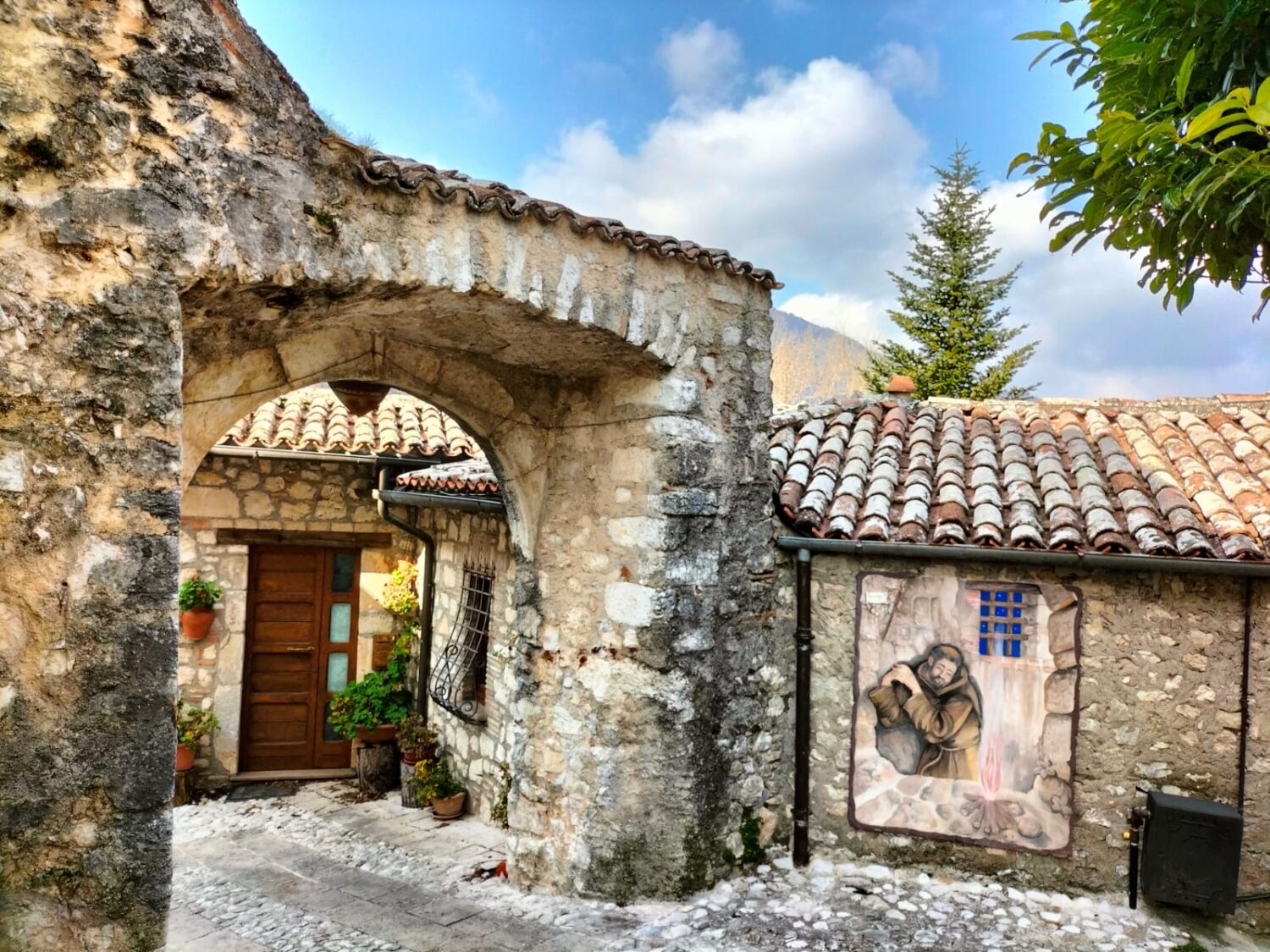
According to legend, a Greek family arriving from Hellada founded the ancient settlement naming it Greze, then Greccie, Greccia, Greciae, Grecce, and finally, it transformed into Greccio during the eighteenth century. Much more simply, the name Greccio derives from a toponym of the vegetable Garex which represents a herbaceous plant prolific in the woods of the Sabine mountains.
It suffered fires, looting, and destruction by the soldiers of Frederick II between 1239-1241 and by the French at the end of the 1700s, but like the phoenix, it has risen from its ashes.
What to See in the Village
It once had a wall with six towers, and one of the two still existing during the seventeenth century became a bell tower and is proudly displayed with its clock striking on the hour. Going up towards the belvedere, you cross one of the old full-arched access doors.
In Piazza Roma, in addition to the fountain, there is the church of the Madonna del Giglio, built in the 15th century and currently closed for restoration. It is in Baroque style, with a single nave, barrel vault, a central altar, and two side altars decorated in stucco, of the Roman school with influences from Carlo Fontana. The high altar is decorated with an early 15th-century tempera tondo depicting the Madonna With Child with the lily and the Child Jesus attributed to anonymous artists stylistically similar to Melozzo da Forlì. On the left altar, there’s a recently restored canvas by Carlo Maratta depicting the Adoration of the Shepherds; on the right altar, there’s an 18th-century Madonna with Child, St. Joseph and St. Louis Gonzaga, and near the presbytery a depiction of the martyrdom of the Franciscan Missionaries in Morocco from the 19th century.
A scenic staircase leads to the parish church of San Michele Arcangelo, originally dedicated to Saint Angelo and whose origins date back to the 11th century even if the first documentation dates back to 1398. It underwent various renovations and today it has a rectangular vaulted hall barrel with two side chapels.
The left chapel from the 17th century was frescoed by Vincenzo Manenti and includes the Madonna of the Rosary with Child, Saint Dominic, Saint Catherine, and the mysteries of the Rosary. Laterally, on one side you’ll find San Bernardino of Siena indicating the village of Greccio, and on the other, Saint Francis extending his hand out to a wolf’s paw. Stucco decorations can be attributed to Gregorio Grignani.
are you ready to make this your destination?
In the chapel on the right, also by Vincenzo Manenti, you’ll find Saint Francis, Saint Anthony of Padova with Child, and Saint Michael Archangel which was very damaged but within a few months, will return to its former glory because it is undergoing restoration. There is also a fresco with the Marriage of Mary, Saint Lucy, Saint Anthony Abate, and the Madonna del Carmelo.
An early 20th-century statue of Saint Michael is proudly displayed in front of the presbytery. In the presbytery above the altar, there is a canvas representing Saint Michael, a beautiful copy of the work by Guido Reni. The frescoes of the Last Supper and the Descent of the Holy Spirit were brought to light in a completely random way in the 1980s, and like most of the paintings inside the church, need a thorough restoration.
A massive 17th-century pipe organ in working order is positioned on the balcony.
The Surrounding Area
Leaving the parish church and turning right, you’ll find yourself at the highest point of the village which overlooks the very fertile and colorful Reatina plain below. Until the 2nd century BC., it was the large lake of Lacus Velino and its remains are still visible in the Lungo and Ripasottile lakes. The Terminillo Massif and the Reatini Mountains act as a bulwark and in the distance on the right, emerges the city of Rieti while on the left, Poggio Bustone. The Velino River runs through the center of the plain.
Near the clearing dedicated to Bethlehem, is the tiny chapel of St. Francis which preserves the rock that he climbed during the first sermon to the people of Greccio.
The Path of Artists
Walking through the alleys and streets, you can admire the quaint stone houses with works of art set on their walls. The “Path of the Artists” or the Sentiero degli Artisti begins near the International Museum of the Nativity Scene and continues to the piazza. Twenty-seven murals were created in 2010 by artists who came from various parts of the world with the common thread of Francis of Assisi.
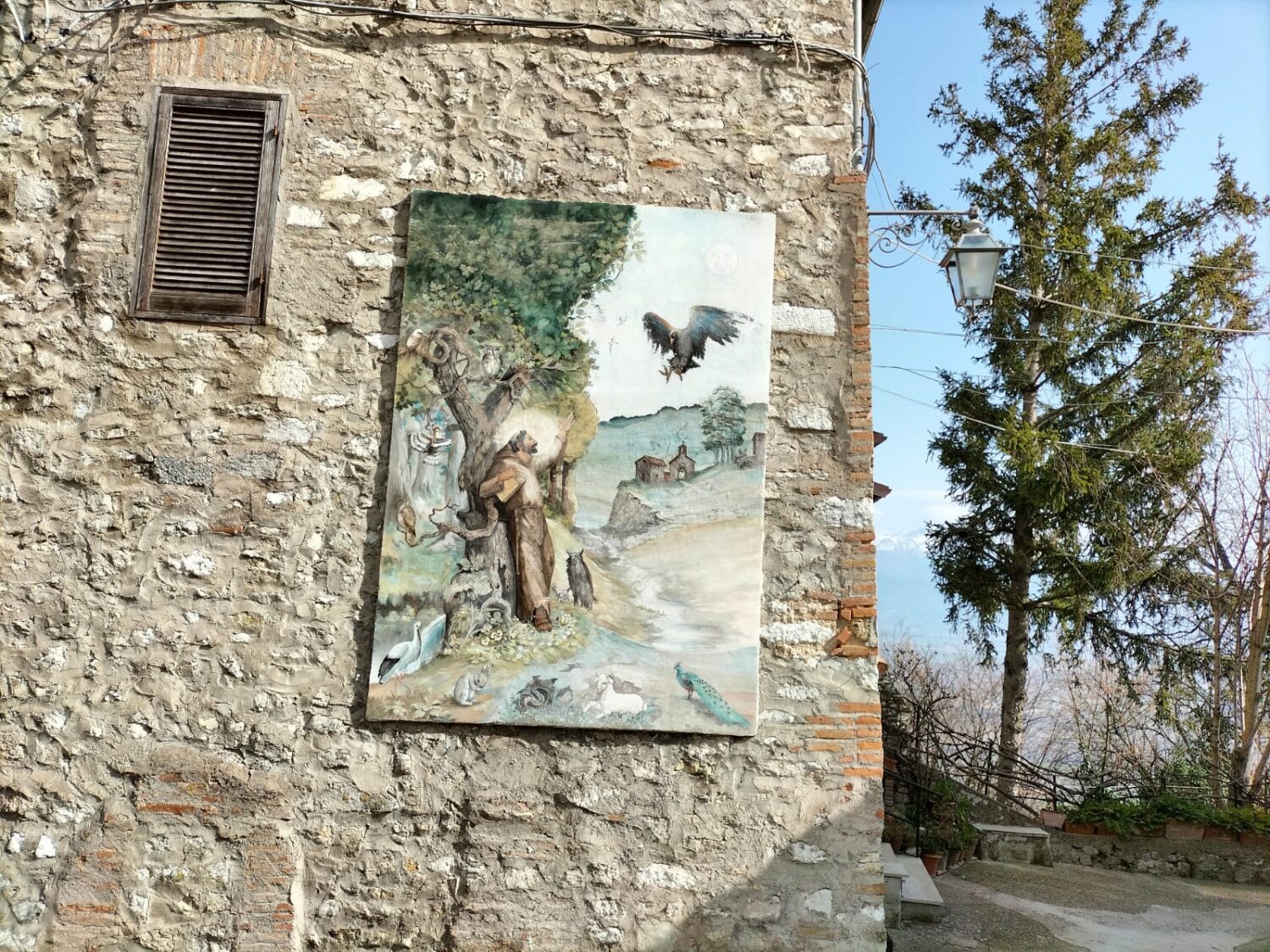
The Nativity Museum
The International Nativity Scene Museum is housed in an old 13th-century church dedicated to Mary and where Francis retired to pray. At the end of the last century it was restored along with another building not far away and today the many nativity scenes that come from all over the world are proudly displayed inside.
Greccio is a nativity all year round but, during the Christmas season, it truly comes alive when every corner and every window of the village is decorated with each resident’s own interpretation of the faithful night.
When you come to this small village, officially one of the Most Beautiful Villages in Italy, you breathe in pure air, restoring body and spirit with long walks along the many paths in the woods. You can reach Monte Lacerone, where Francis built a shelter between two hornbeams and where there is a small church dedicated to the saint, or to the sanctuary where the first living nativity scene was created, gratifying the eyes and the heart. Foodies will also be delighted with the delicacies that the local restaurants and taverns serve, in accordance with tradition but with a touch of innovation.
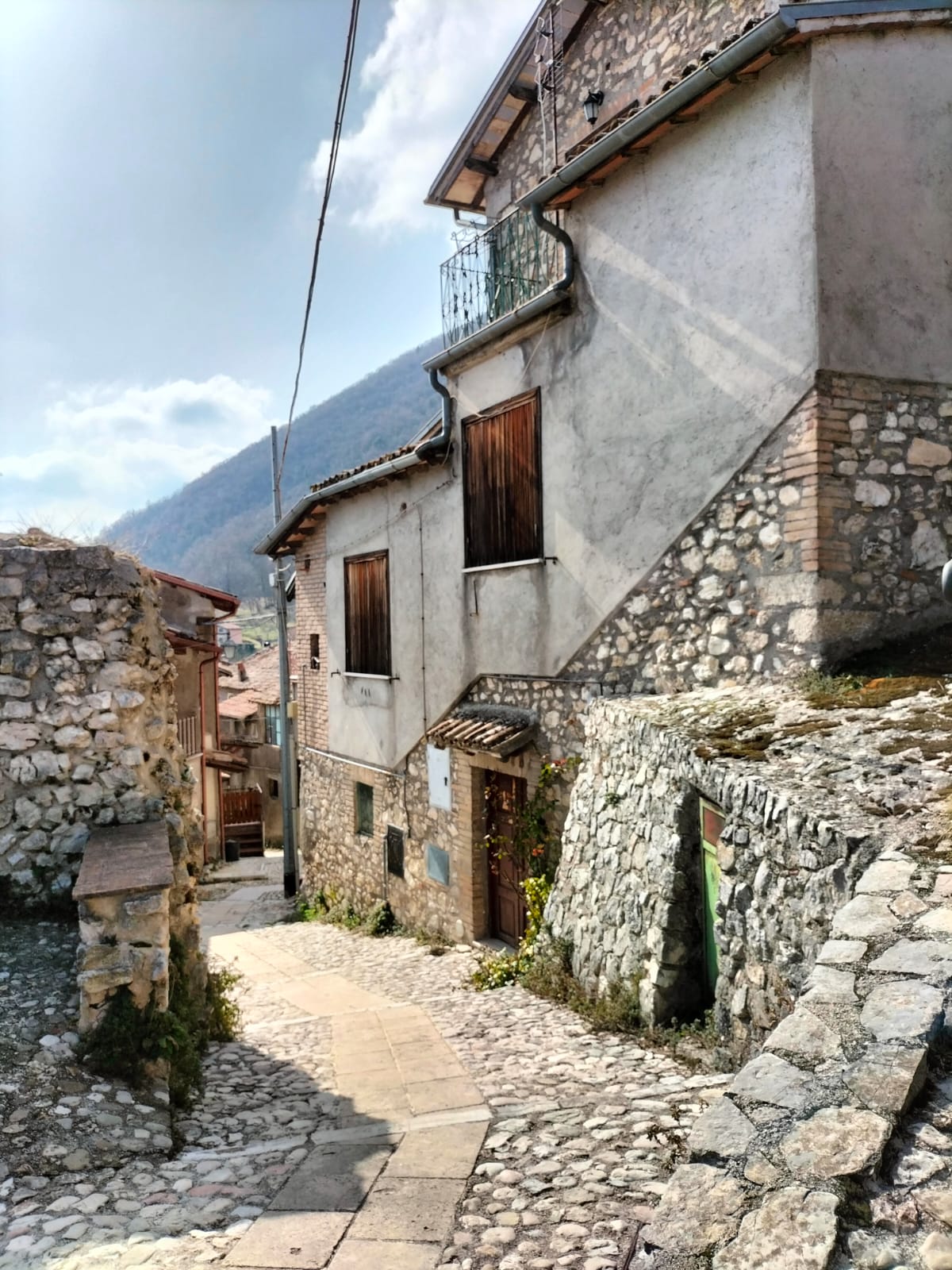
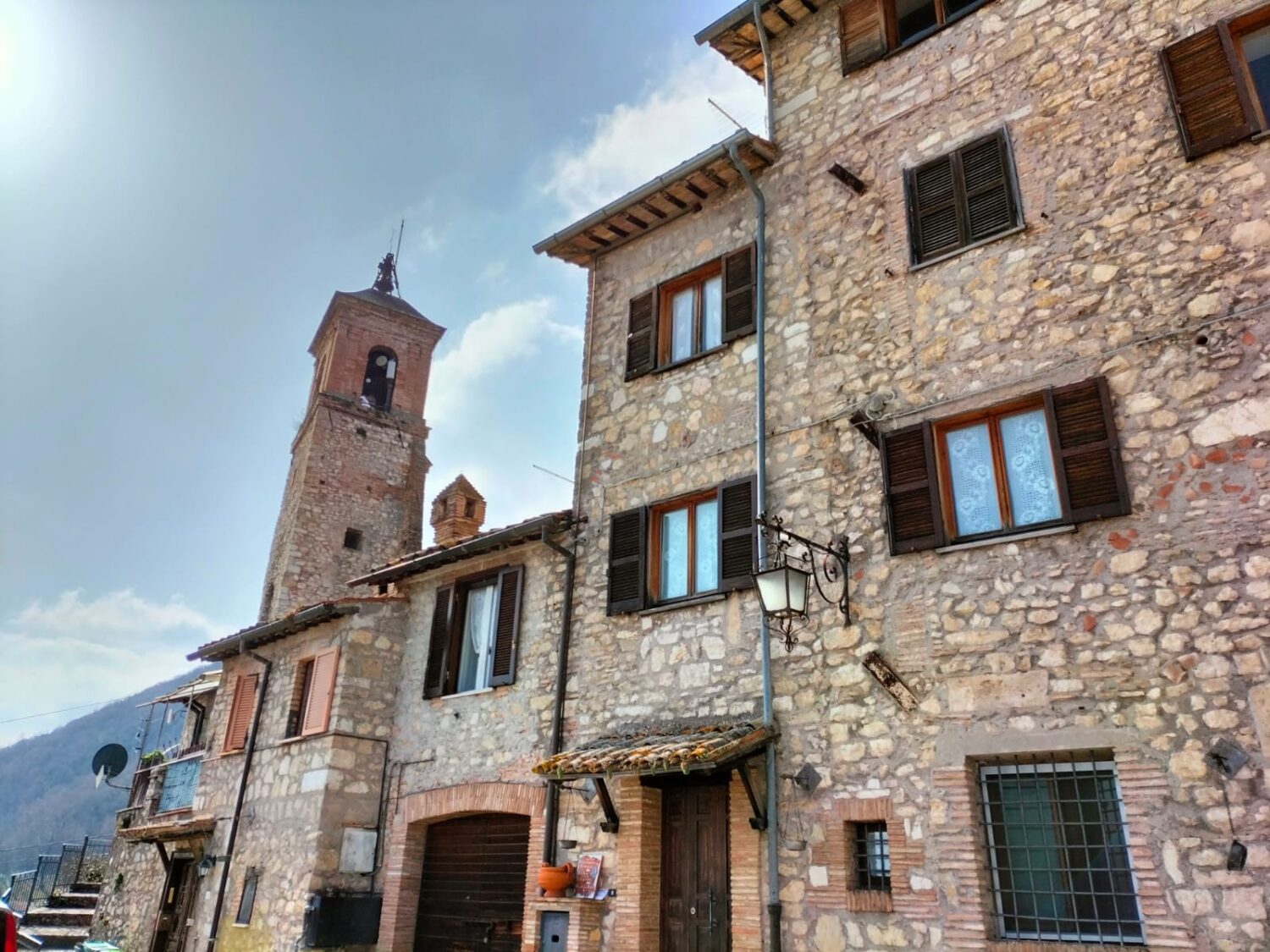

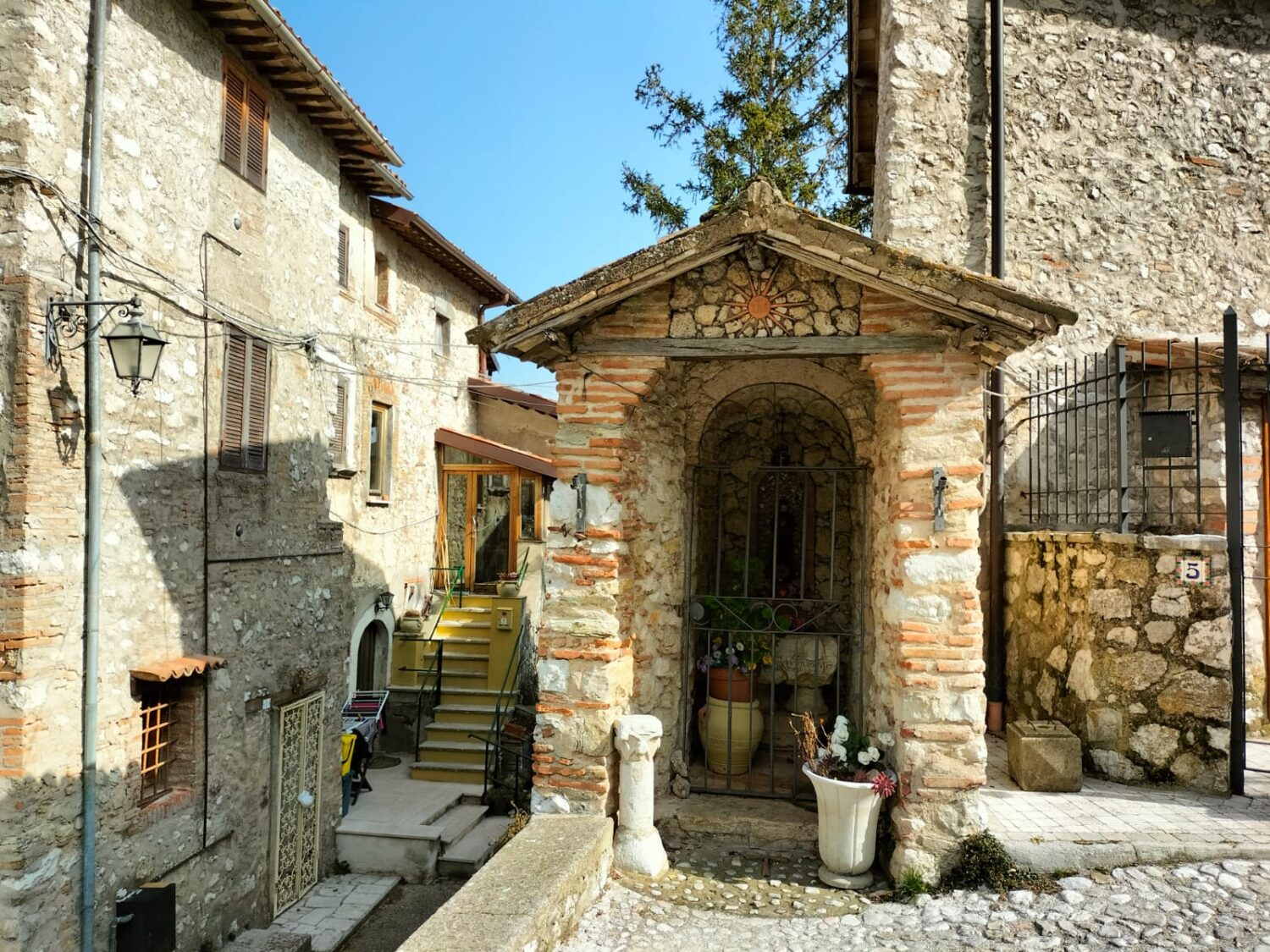
photo copyrights: M. Antonietta Menichelli
About the Author
